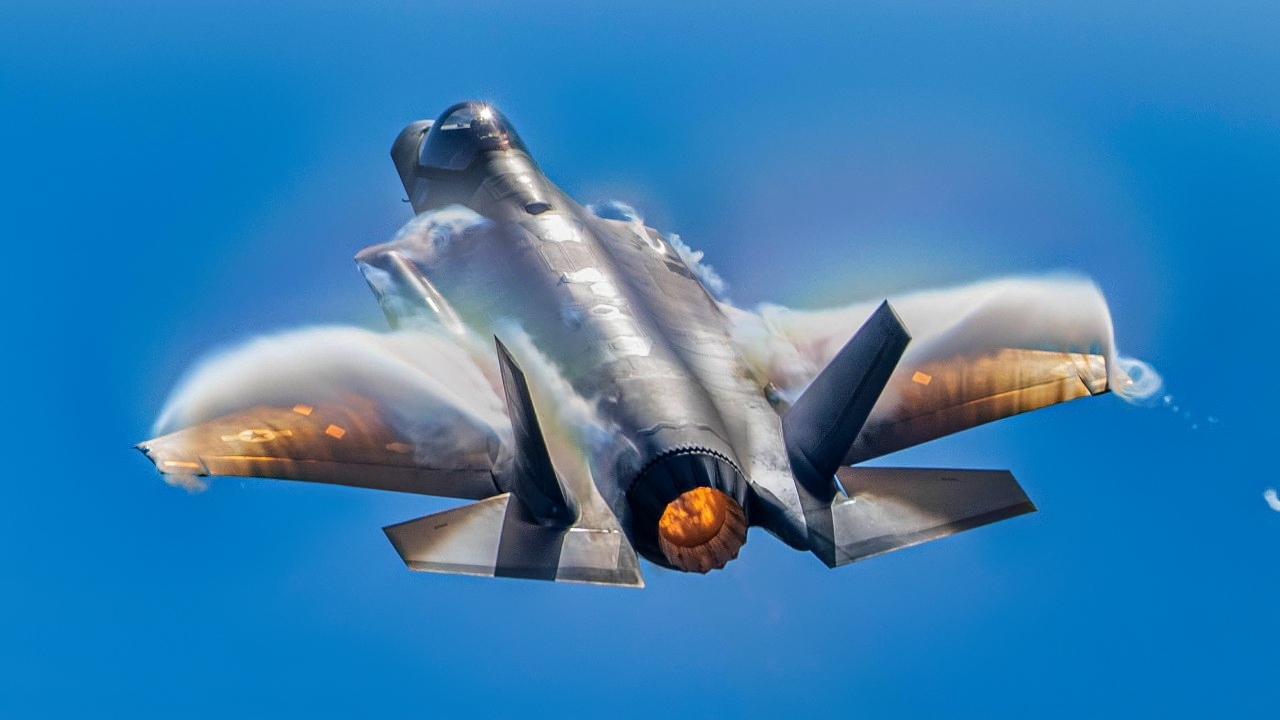Key Points and Summary – The Air Force’s F-35 roadmap shows modest fleet growth through 2030, with near-term buys reduced to fund crucial upgrades—especially TR-3 and Block 4.
-Leaders argue capability must pace threats, but critics warn the service is falling behind after decades of high demand, slowed procurement, and the F-22 truncation.
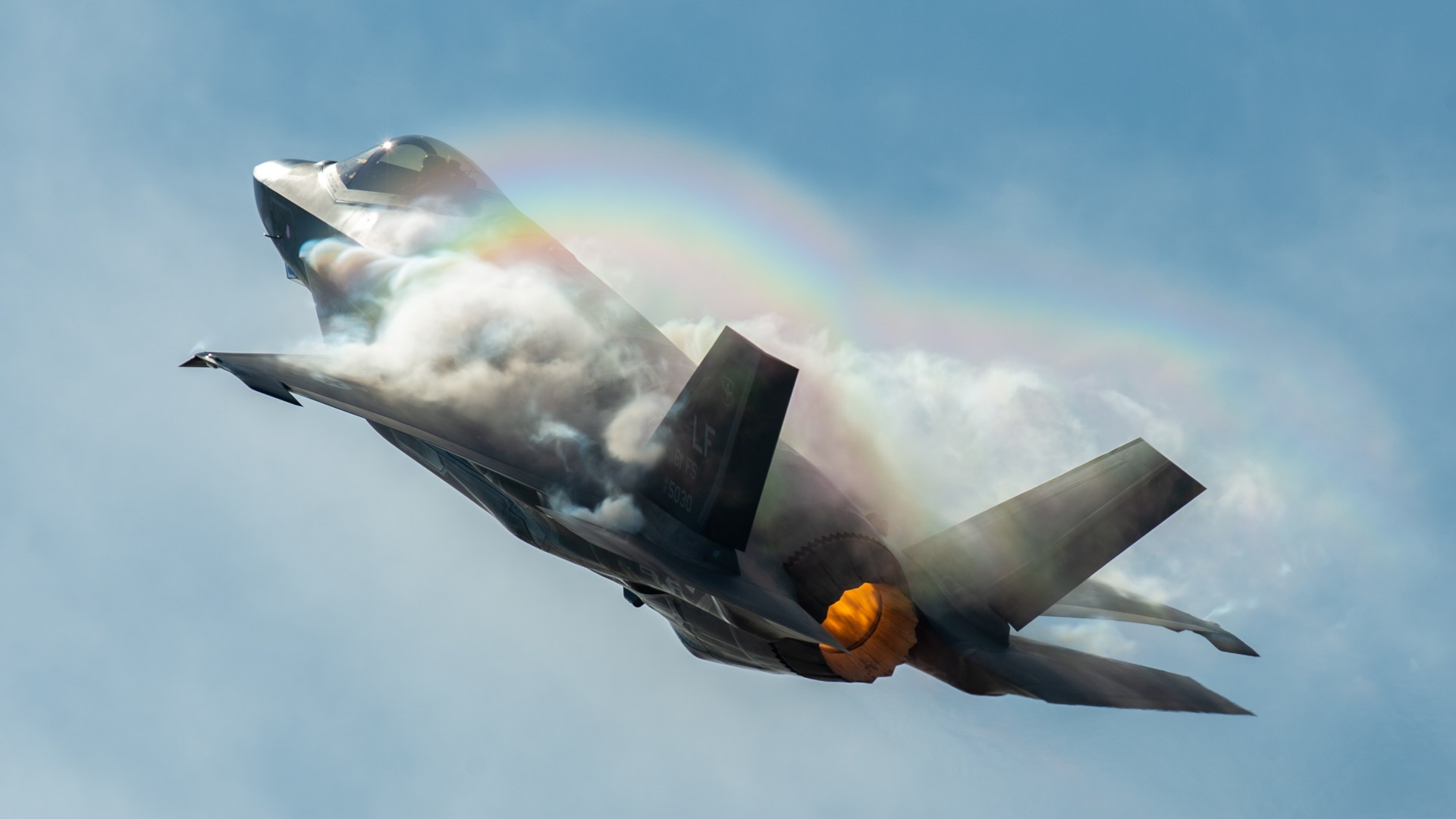
Capt. Andrew “Dojo” Olson, F-35 Heritage Flight Team pilot and commander performs a vertical climb in an F-35A Lightning II during the Bell Fort Worth Alliance Air Show Oct. 14, 2018, in Fort Worth, Texas. The F-35A Lightning II’s F-135 single-engine contains 43,000 pounds of thrust. (U.S. Air Force photo by Senior Airman Alexander Cook)
-A Mitchell Institute report urges transparency, more funding, and a surge to 72 F-35s per year to rebuild capacity and sortie rates.
-Meanwhile, the GAO pegs lifetime F-35 costs above $2 trillion—fueling scrutiny even as the JPO says long-range planning is baked in.
-Looming over it all: China’s fast-growing J-20 fleet.
USAF’s F-35 Roadmap: Fewer Jets Now, Bigger Upgrades Later
The U.S. Air Force shared with Congress a roadmap for the F-35 program in the coming years. The plan features “relatively limited growth” for the U.S. fleet, as reported by Air and Space Forces.
The roadmap shows a base fleet of 344 F-35 aircraft in Fiscal Year (FY) 2026, followed by increases of 39 in 2027, 18 in 2028, 32 in 2029, and 39 in 2030. The Air Force bought 48 jets in fiscal 2024, more than what is projected for any of the coming years. The Air Force asked for just 24 F-35s in its 2026 budget request.
Those numbers “do not represent procurement targets but are the desired overall USAF possessed inventory on the ramp,” the roadmap says, Air and Space Forces reported.
“Recapitalization of aging platforms due to early lot obsolescence (e.g. F-35), diminishing parts availability (F-35 and F-15E), and other factors will drive procurement of aircraft above the [total aircraft inventory] requirement.”
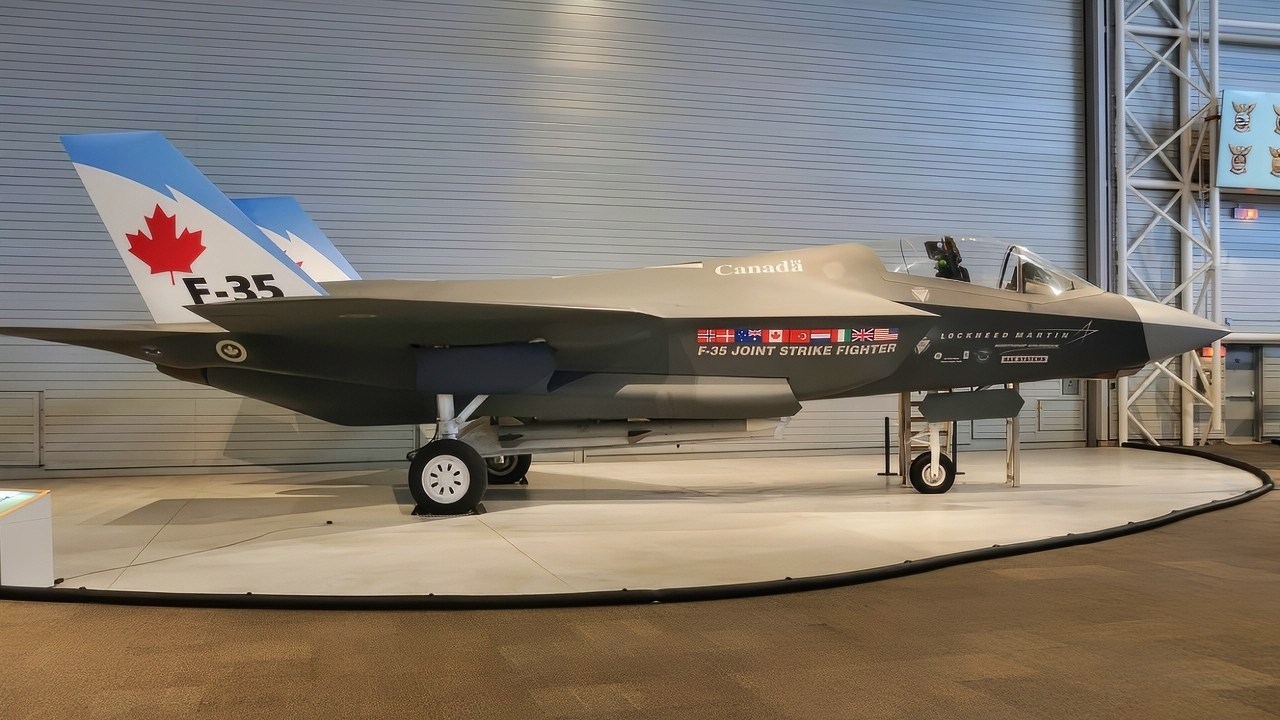
Canada F-35. Image Credit: Creative Commons.
The report also shows the Air Force is prioritizing upgrading the jets with Technology Refresh 3 and 4, although F-35s already upgraded with TR-2 will not be prioritized.
According to Defence Industry Europe, the Air Force projection is based on the Combat Coded Total Aircraft Inventory (CCTAI) metric.
How to Win the Next War
Back in September, retired Air Force Col. John Venable, along with research analyst Joshua Baker, delivered a report called “Winning the Next War: Overcoming the U.S. Air Force’s Capacity, Capability, and Readiness Crisis” to The Mitchell Institute for Aerospace at the Studies Air & Space Forces Association.
The report offered some context about how aircraft have been used in recent decades.
“Today’s aircraft and their crews were flown hard over 30 years of conflicts, including Operation Desert Storm, the follow-on Operations Northern Watch and Southern Watch over Iraq, Operation Deliberate Force over Bosnia, Operation Allied Force over Kosovo, and numerous smaller contingencies,” Venable and Baker write in the report.
“Demand spiked heavily in the wake of the 9/11 attacks with Operation Enduring Freedom in Afghanistan, Operation Iraqi Freedom, Operation Odyssey Dawn over Libya, Operation Inherent Resolve over Syria, Operation Midnight Hammer, and other engagements.”
This dynamic, they write, has affected the F-35 program, as the Air Force has “sustained a high level of operational demand with fewer aircraft and crews to carry the load for decades.”
And this, they write, has had consequences.
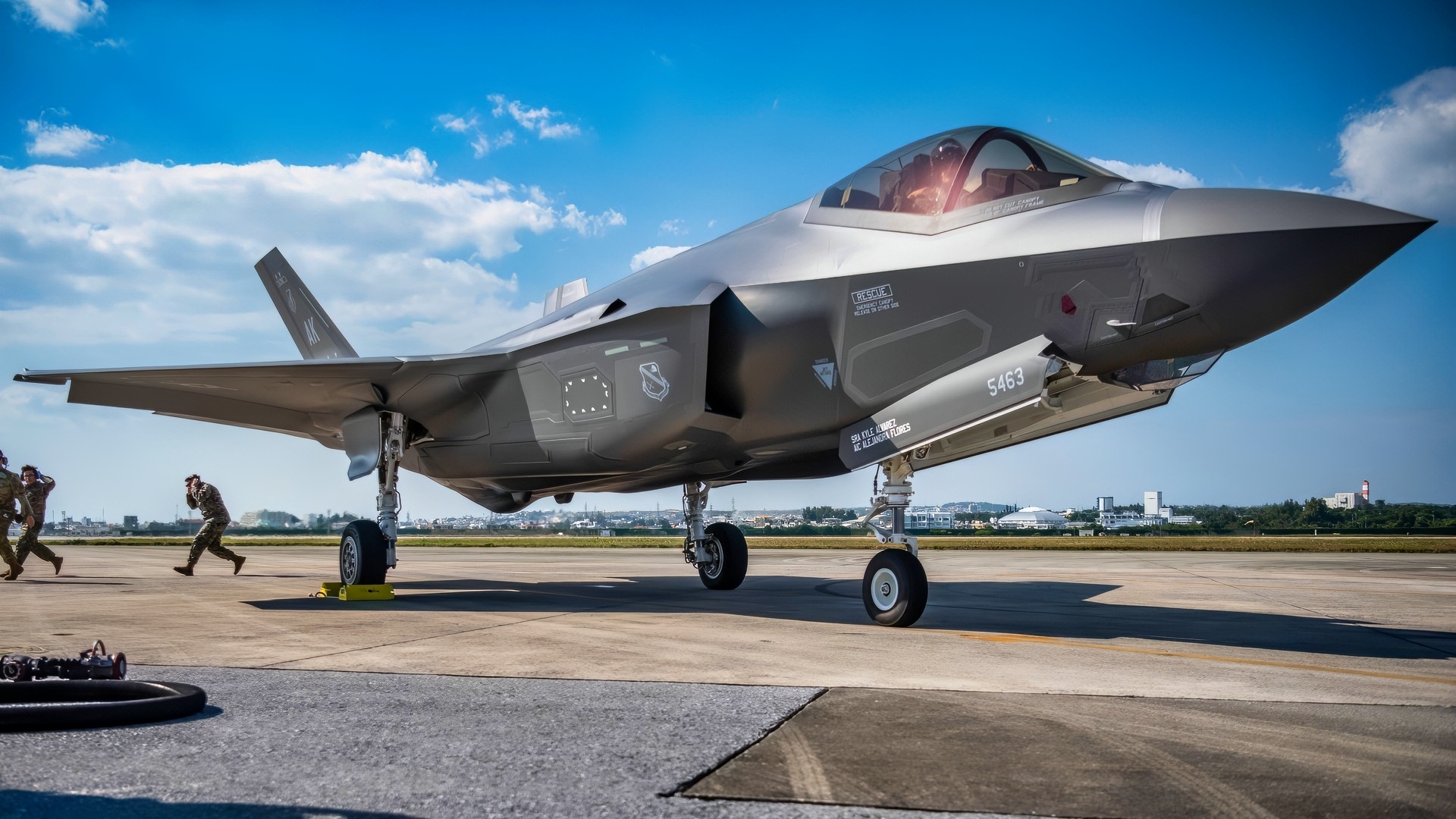
A U.S. Airman and two U.S. Marines support an F-35A Lightning II during joint hot pit refueling training at Kadena Air Base, Japan, March 10, 2022. Hot pit refueling uses a single-point refuel pump, which allows an aircraft to be rapidly refueled immediately after landing, while the engine is running. This cuts down on response time and ensures the mission can be completed anytime, anywhere. (U.S. Air Force photo by Airman 1st Class Anna Nolte)
“The truncation of the F-22 production line at 187 aircraft stands as the starkest example— the original requirement was set at 750 aircraft, but the program was cut over time to fund alternate DoD priorities,” they write. “The procurement rate for the F-35 was also slowed precipitously. The Air Force should have had 800 F-35s by 2020, but it ended up with just 27.”
The authors recommend the Air Force “acknowledge the depth of its capacity, capability, and readiness challenges,” and that the Trump administration and Pentagon insist on “absolute transparency and a frank dialog on the specific gaps, the risks they create, and funding needed to elevate the service back to a level of global threat dominance.”
The authors also recommend that Congress increase funding for modernization. Air Force leaders, meanwhile, should “decide on a force structure plan to regrow Air Force aircraft inventories to the levels needed to meet the combatant commands’ war plan requirements.”
The authors recommend upping the order to 72 F-35s per year, while also increasing the fleet’s capacity to a point where it can “support a minimum of three sorties a week per pilot.”
The report repeatedly mentions that U.S. capability risks falling behind China’s.
“(People’s Liberation Army Air Force [PLAAF]) capacity and readiness levels already exceed those of the USAF, and it is increasing both at rates that will place U.S. airmen in an untenable position for a confrontation with China,” the report concludes, referencing China’s People’s Liberation Army Air Force.
“Their fighter pilots are flying half-again as much as USAF pilots, and the PLAAF will acquire 120 5th-generation J-20s this year, almost three times the 42 F-35s the Air Force is programmed to acquire in FY 2025.”
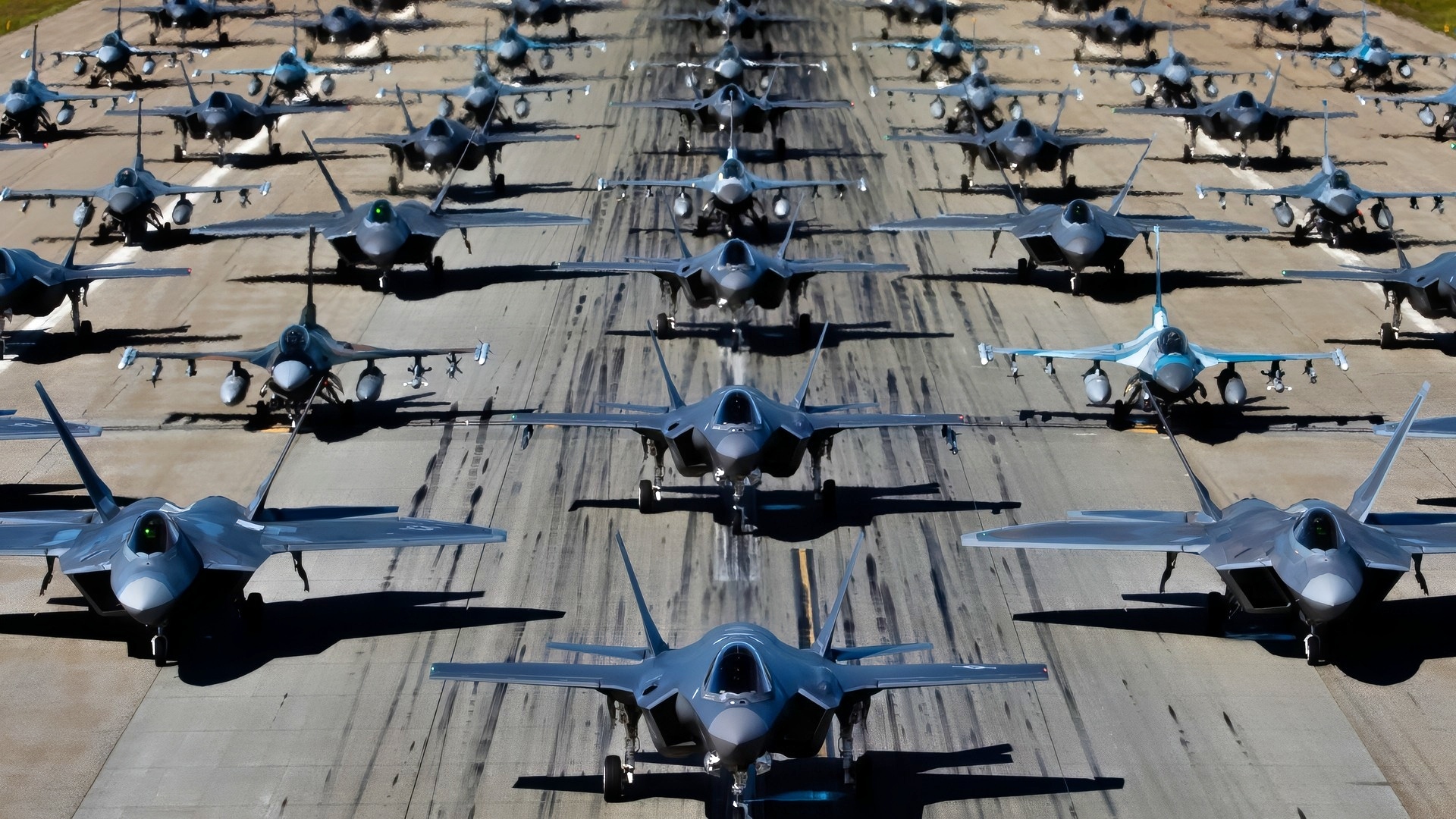
The 354th Fighter Wing conducts a 75-fighter jet formation at Eielson Air Force Base, Alaska, Aug. 12, 2022, in honor of the U.S. Air Force’s 75th Anniversary. This capabilities demonstration included F-35A Lightning II, F-16 Fighting Falcon and F-22 Raptor aircraft from across Pacific Air Forces. (U.S. Air Force photo by Senior Airman Gary Hilton)
A Costly Program
Venable and Baker’s report continually references the high expense of the necessary upgrades to the program. But as another recent report found, a lot has already been spent on the F-35.
In the spring of 2024, the Government Accountability Office released a report showing that the F-35 program has reached a lifetime cost of more than $2 trillion.
Responsible Statecraft, in a report published a few months later, went on to describe the F-35 as “officially the most expensive weapon program in history.”
This April, however, the F-35 Joint Program Office released a “clarification” about that cost estimate:
“Notably, the F-35 program uniquely captures a 40-year forecast of through-life development costs at the outset, a first-of-its-kind approach for a program of this scale. This long-term modernization plan ensures that the F-35 remains a relevant warfighting machine and ensures the DOD maximizes the longevity of the total investment,” the press release accompanying the report said.
About the Author: Stephen Silver
Stephen Silver is an award-winning journalist, essayist, and film critic, and contributor to the Philadelphia Inquirer, the Jewish Telegraphic Agency, Broad Street Review, and Splice Today. The co-founder of the Philadelphia Film Critics Circle, Stephen lives in suburban Philadelphia with his wife and two sons. For over a decade, Stephen has authored thousands of articles that focus on politics, national security, technology, and the economy. Follow him on X (formerly Twitter) at @StephenSilver, and subscribe to his Substack newsletter.
More Military
Russia’s Mach 2 Su-30SM Fighter Has A Message for Any Air Force on Earth
The Mach 2.2 B-1A Bomber Has A Message for the U.S. Air Force
The Mach 2.35 ‘Super’ Eurofighter Typhoon Fighter Has a Message for Any Air Force On Earth
Canada’s CF-18 Hornet Fighter Crisis
Forget NGAD or the J-20: A 7th Generation Fighter Could Hit Mach 5


